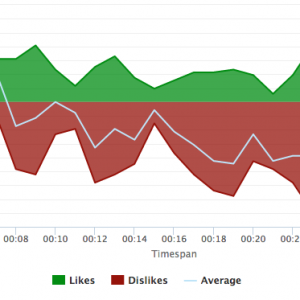What Is Monadic Testing and How Can It Help Your Software Development Process?

As software development becomes increasingly complex, developers are always in search of better, more efficient ways to test their code. One technique that has gained popularity in recent years is monadic testing. In this article, we will explore what monadic testing is, its benefits, and how to implement it in your software development process.
Understanding Monadic Testing
Before delving into the benefits and implementation of monadic testing, let us first define what it is. Monadic testing is a testing technique that uses the concept of monads in functional programming to test a function or a group of functions in a unified manner. By using monads, developers can define a sequence of operations that the function(s) should perform and then test the code against that sequence of operations.
The Concept of Monads in Functional Programming
Monads are a concept in functional programming that simplifies the process of writing and testing code. A monad is essentially a way of sequencing operations. Developers can chain multiple operations together using monads, making the code more composable and concise. In the context of testing, monads can be used to define a sequence of operations that the function(s) should perform and then test the code against that sequence of operations.
One of the key benefits of using monads in functional programming is that they enable developers to write more modular and reusable code. By breaking down complex operations into smaller, composable parts, developers can create functions that are easier to test and maintain. This can lead to more efficient and effective development processes, as well as more robust and reliable software.
How Monadic Testing Differs from Traditional Testing
Monadic testing differs from traditional testing in that it focuses on testing the function(s) in a unified and contextual manner. With traditional testing, there are often multiple tests for different functionality, and these tests may not be related or sequenced in a meaningful way. With monadic testing, developers can test the function(s) in a way that emulates how the function(s) will operate in a real-world scenario.
Another benefit of monadic testing is that it can help to identify and isolate bugs more effectively. By testing the function(s) in a more holistic and contextual manner, developers can identify issues that may not have been caught by traditional testing methods. This can lead to more robust and reliable software, as well as faster and more efficient development processes.
In conclusion, monadic testing is a powerful technique that can help developers to write more modular, reusable, and reliable code. By using monads to define a sequence of operations and test the code against that sequence, developers can create more efficient and effective development processes, as well as more robust and reliable software.
Benefits of Monadic Testing in Software Development
Monadic testing is a testing method that has been gaining popularity in recent years. It involves testing functions in a contextual and unified manner, which can lead to improved code quality, enhanced test coverage, easier debugging and maintenance, and a faster development process. Let’s take a closer look at each of these benefits:
Improved Code Quality
Monadic testing allows developers to test their functions in a more comprehensive and contextual manner. This can lead to improved code quality, as developers can catch bugs and errors that may have gone unnoticed otherwise. With monadic testing, developers can test for scenarios that may not have been covered in traditional testing methods, which can lead to more robust and reliable code.
For example, let’s say you are developing a function that calculates the average of a list of numbers. With traditional testing methods, you may only test the function with a few sample inputs. However, with monadic testing, you can test the function with a wide range of inputs, including empty lists, lists with only one element, and lists with a large number of elements. This can help you identify edge cases and potential bugs that may have gone unnoticed otherwise.
Enhanced Test Coverage
With monadic testing, developers can test groups of functions and their interactions with each other. This can lead to more comprehensive test coverage, as developers can test for scenarios that may not have been covered in traditional testing methods.
For example, let’s say you are developing a web application that allows users to create and edit blog posts. You may have several functions that interact with each other, such as a function to create a new post, a function to edit an existing post, and a function to delete a post. With monadic testing, you can test these functions together, ensuring that they work seamlessly with each other and that there are no unexpected side effects.
Easier Debugging and Maintenance
By testing functions in a contextual and unified manner, developers can more easily identify and isolate bugs and errors. This makes the debugging and maintenance process more efficient.
For example, say you are debugging a function that is causing your application to crash. With monadic testing, you can isolate the function and test it in a controlled environment, making it easier to identify the root cause of the issue. Additionally, because monadic testing allows you to test groups of functions together, you can identify any potential side effects that may be causing the issue.
Faster Development Process
Monadic testing can lead to a faster development process, as developers can test groups of functions and their interactions with each other. This can lead to more efficient and effective testing, which can ultimately save time in the development process.
For example, let’s say you are developing a complex application that has many interconnected functions. With traditional testing methods, you may need to test each function individually, which can be time-consuming and inefficient. However, with monadic testing, you can test groups of functions together, ensuring that they work seamlessly with each other and that there are no unexpected side effects. This can save time and make the development process more efficient.
Conclusion
Overall, monadic testing is a powerful testing method that can help software developers improve their code quality, enhance their test coverage, make debugging and maintenance easier, and speed up the development process. By testing functions in a contextual and unified manner, developers can catch bugs and errors that may have gone unnoticed otherwise, and ensure that their code is robust and reliable.
Implementing Monadic Testing in Your Software Development Process
Monadic testing is a powerful technique that can improve the quality, reliability, and maintainability of your software. By testing your code against a sequence of operations, you can identify and fix bugs, improve the overall design of your application, and reduce the risk of unexpected behavior.
Now that we have established the benefits of monadic testing, let’s explore how you can implement it in your software development process. Here are some steps:
Identifying Suitable Use Cases
The first step in implementing monadic testing is to identify which groups of functions in your codebase would benefit from this technique. Consider functions that have complex interactions with each other or that are critical to the function of your application. By focusing on these areas, you can ensure that your tests are targeting the most important parts of your code.
For example, if you are developing a web application, you might want to focus on functions that handle user authentication, data validation, or database queries. These functions are critical to the security and reliability of your application, and they often have complex interactions with other parts of your code.
Integrating Monadic Testing Tools and Libraries
Once you have identified the suitable groups of functions, the next step is to integrate monadic testing tools and libraries into your development process. There are various monadic testing libraries available for different programming languages.
These libraries provide a set of tools and utilities that make it easy to write and execute monadic tests. They typically include generators for creating randomized test data, combinators for composing tests, and reporting tools for analyzing test results.
Writing Monadic Test Cases
With the necessary tools and libraries in place, it’s time to write the monadic test cases. This involves defining the sequence of operations that the group of functions should perform and testing the code against that sequence.
For example, if you are testing a function that handles user authentication, you might define a sequence of operations that includes creating a new user account, logging in with that account, and then logging out. You can then test the code against this sequence, ensuring that it behaves correctly at each step.
When writing monadic test cases, it’s important to consider edge cases and unusual scenarios. By testing your code against a wide range of inputs and conditions, you can identify and fix bugs that might otherwise go unnoticed.
Analyzing Test Results and Refining Your Code
Finally, once you have run your monadic tests, it’s important to analyze the results and refine your code accordingly. Use the feedback from the tests to improve the quality, coverage, and efficiency of your code.
For example, if you find that certain functions are consistently failing their tests, you might need to refactor the code or add additional error handling. Alternatively, if you find that certain functions are not being tested adequately, you might need to add more test cases or adjust your testing strategy.
By continually analyzing and refining your code in this way, you can ensure that it remains robust, reliable, and maintainable over time.
Monadic Testing Best Practices
To get the most out of monadic testing, there are some best practices that you should follow:
Keeping Tests Small and Focused
Avoid testing large, complex scenarios. Instead, keep the tests small and focused on testing a single unit of functionality.
Ensuring Test Cases Are Independent
Avoid test cases that depend on other test cases. Each test case should be independent, so that the results of one test do not affect the results of another.
Prioritizing Test Coverage for Critical Components
Focus your testing efforts on the critical components of your application. These may include functions that are crucial to the overall functionality of your application, or that handle sensitive data.
Continuously Updating and Expanding Test Suites
Finally, continuously update and expand your test suites to keep pace with changes to your codebase. As you refactor code or add new functionality, ensure that your tests stay up-to-date and cover all necessary scenarios.
Conclusion
Monadic testing is a testing technique that allows developers to test groups of functions in a contextual and unified manner, using the concept of monads in functional programming. By implementing monadic testing in your software development process, you can improve code quality, enhance test coverage, make maintenance and debugging easier, and speed up the development process. Follow best practices when implementing monadic testing, such as prioritizing test coverage for critical components and keeping tests small and focused, to get the most out of this technique.








